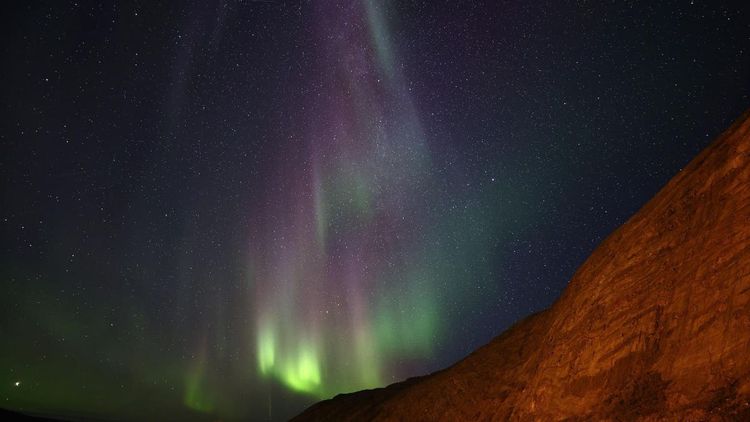Tonight's Northern Lights Forecast: How—And Where—To Watch

Viewers in the northern United States may be able to see the hard-to-predict northern lights on Monday and Tuesday—here’s what to know about the chances.
The Northern Lights, also known as the Aurora Borealis, are visible on September 10, 2021 in ... [+] Kangerlussuaq, Greenland. (Photo by Mario Tama/Getty Images)
Getty Images Key FactsThe geomagnetic activity of the aurora borealis is expected to be a six on a scale of nine early Tuesday morning, and a four Wednesday morning, according to the Space Weather Prediction Center, with the upper Midwest, northern Plains, northern New England and northern upstate New York under the bulk of activity.
The University of Alaska Fairbanks’ Geophysical Institute forecast is similar, predicting high activity Monday night into Tuesday morning, peaking in the early morning hours.
The Geophysical Institute is predicting that “highly active auroral displays will be visible” overhead in the Minneapolis and Milwaukee areas early Tuesday morning—as long as viewers get away from city lights—and “visible low on the horizon” in areas as far south as Indianapolis and Annapolis, Maryland.
The ability to see the northern lights depends heavily on sky conditions—whether there’s cloud cover—and dark skies, meaning it will be more difficult to see the lights from a city than a rural area.
Around 2 a.m. Tuesday, the National Weather Service is forecasting cloudy skies in much of the Northeast, mostly clear skies in the northern Plains and some clouds in the upper Midwest, but clear in the rest of the upper Mississippi Valley.
The best time to see the northern lights is “three or four hours around midnight,” though it does occur throughout the night, according to the University of Alaska.
Earlier this year, there was a G4 geomagnetic storm—what causes the aurora borealis to be seen—that was so strong there were viewings as far south as Arizona, the Washington Post reported.
Key BackgroundThe northern and southern lights, seen around the magnetic north and south poles, are caused when electrically charged particles stream out from the Sun, enter Earth’s atmosphere and collide with molecules and atoms of gas, bringing green, red, blue, pink and purple colors to the sky. Scientists are able to predict when there will be aurora, "but with less confidence than they can predict the regular weather,” according to the Geophysical Institute, often struggling with exact timing of when the geomagnetic storms will occur.
What To Watch ForIf you miss the northern lights tonight, you may get another chance in the next couple of months. September through April is recognized as the best time to see the northern lights because the sky is dark enough to see the aurora.
Further ReadingMORE FROM FORBESNorthern Lights Possible In The U.S. Early On Tuesday As Solar Storm Erupts In 'Earth Strike Zone'By Jamie Carter






























































